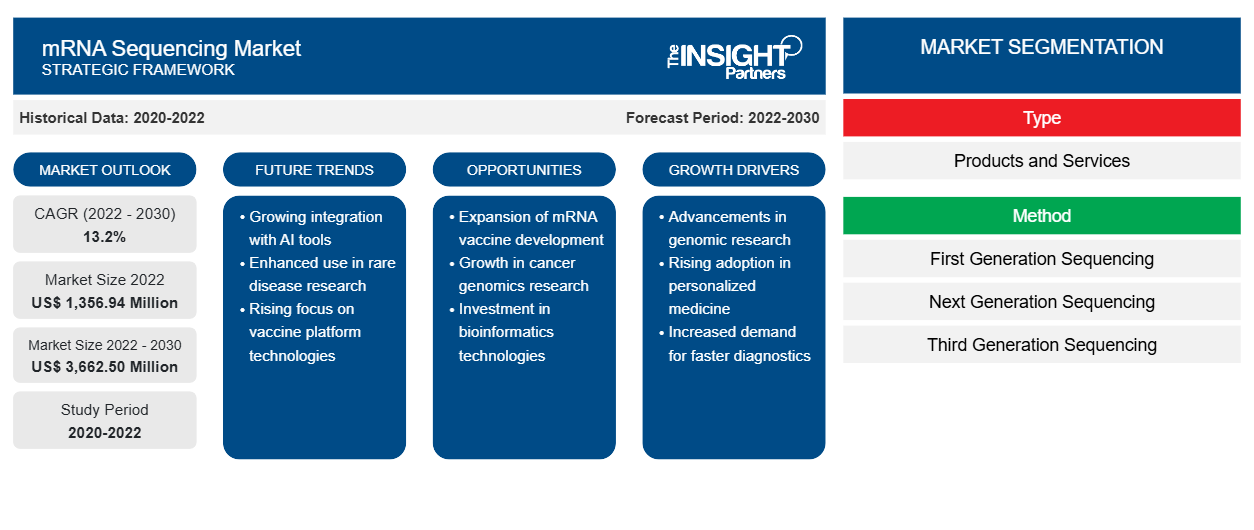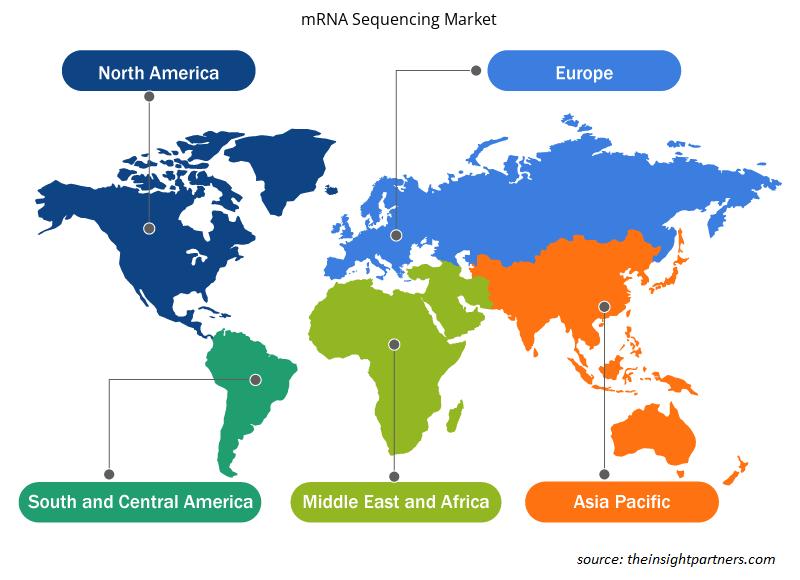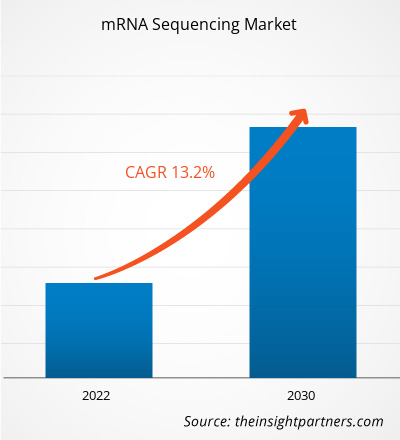[Rapporto di ricerca] Si prevede che il mercato del sequenziamento dell'mRNA crescerà da 1,67 miliardi di dollari nel 2024 a 4,02 miliardi di dollari entro il 2031; si stima che registrerà un CAGR del 13,6% nel periodo 2025-2031.
Approfondimenti di mercato e opinioni degli analisti:
Fattori come il sequenziamento dell'mRNA accelerano il tasso di diagnosi delle malattie rare e il lancio di prodotti innovativi stimola la crescita del mercato del sequenziamento dell'mRNA .
Fattori di crescita:
Il sequenziamento dell'mRNA accelera il tasso diagnostico per le malattie rare
Le statistiche pubblicate da Swedish Orphan Biovitrum AB hanno rivelato che, attualmente, a livello globale sono state identificate più di 7.000 malattie rare/orfane. Di queste, solo il 5% ha farmaci approvati a livello globale. Pertanto, il costo sanitario associato al trattamento delle malattie rare è enorme. Il costo sanitario è circa 10 volte superiore a quello di altre malattie. Ad esempio, negli Stati Uniti, il costo di 373 malattie rare ammonta a 2,2 trilioni di dollari all'anno. Secondo alcune stime, il costo sanitario per tutte le malattie rare note potrebbe variare tra i 7,2 e gli 8,6 trilioni di dollari all'anno. Pertanto, le malattie rare associate a difficoltà e ritardi nella diagnosi, alla scarsa disponibilità di trattamenti, allo sviluppo di nuovi trattamenti e a normative e accessibilità favorevoli porteranno allo sviluppo di tecnologie innovative. Il "Whole-Genome Sequencing (WGS)" di Illumina è un esempio di come sia possibile migliorare la diagnosi delle malattie genetiche rare. Il WGS offre tre vantaggi chiave rispetto ad altri metodi di test genetici: miglioramento dell'efficienza operativa, riduzione dei costi di produzione e bassi costi diagnostici. Inoltre, il WGS è il test più completo per rilevare più tipi di varianti in un unico test, il che si rivela importante per le malattie rare.
Pertanto, la crescente domanda di sequenziamento dell'mRNA per identificare le malattie rare sta contribuendo alla crescitaDimensioni del mercato del sequenziamento dell'mRNA.
Riceverai la personalizzazione gratuita di qualsiasi report, incluse parti di questo report, analisi a livello nazionale, pacchetto dati Excel e potrai usufruire di fantastiche offerte e sconti per start-up e università.
Mercato del sequenziamento dell'mRNA: approfondimenti strategici

-
Scopri le principali tendenze di mercato di questo rapporto.Questo campione GRATUITO includerà analisi di dati che spaziano dalle tendenze di mercato alle stime e alle previsioni.
Segmentazione e ambito del report:
L'analisi di mercato del sequenziamento dell'mRNA è stata condotta considerando i seguenti segmenti: tipo, metodo e utente finale.
Analisi segmentale:
In base alla tipologia, il mercato del sequenziamento dell'mRNA è suddiviso in prodotti e servizi. Il segmento relativo alla tipologia è ulteriormente suddiviso in prodotti e servizi. Il segmento dei beni di consumo ha detenuto la quota di mercato maggiore nel sequenziamento dell'mRNA nel 2022. Si prevede che il segmento dei servizi registrerà il CAGR più elevato, pari al 13,9%, per il periodo di previsione.mRNA sequencing market is bifurcated into products and services. The type segment is further classified into products and services. The consumables segment held the largest mRNA sequencing market share in 2022. The service segment is anticipated to register the highest CAGR of 13.9% for the forecast period.
Il sequenziamento di mRNA ad alta produttività è una tecnica standard per la scoperta del trascrittoma e l'identificazione di analisi di espressione genica differenziale nei laboratori di scienze biologiche. Pertanto, il lancio di prodotti innovativi da parte dei produttori stimolerà la crescita del segmento dei materiali di consumo. Il kit di preparazione SMRTbell 3.0 e i kit di legame 3.1 e 3.2 di PacBio sono esempi di materiali di consumo innovativi utilizzati per il sequenziamento di mRNA. Inoltre, nell'ottobre 2023, PacBio ha annunciato il lancio di nuovi prodotti per lo sviluppo di soluzioni di sequenziamento di alta qualità e accuratezza, i "Kinnex RNA kit". I kit Kinnex RNA aumentano la produttività per il sequenziamento di RNA a lunghezza intera, RNA a singola cellula e rRNA 16S. Questi kit Kinnex si basano sui "metodi MAS-seq", che consentono ai clienti di trascrivere librerie a catena lunga in librerie a catena corta, aumentando la produttività e rendendo il processo di sequenziamento più conveniente.
Progressi tecnologici: una nuova tendenza nel mercato del sequenziamento dell'mRNAmRNA Sequencing Market
Con l'afflusso di tecnologie, i vaccini e le terapie a mRNA hanno un impatto significativo sulla risposta a bisogni medici non ancora soddisfatti. Ad esempio, l'emergente tecnologia di sequenziamento dell'mRNA contribuirà alla ricerca sul cancro. Il sequenziamento dell'mRNA di Illumina per il trascrittoma del cancro è un esempio di questo tipo, in quanto fornisce informazioni funzionali sull'espressione genica e sulla fusione genica del cancro, aiutando gli scienziati a comprendere la classificazione e la progressione del tumore. Pertanto, il sequenziamento dell'mRNA del cancro può aiutare gli scienziati a:
- Determinare l'espressione delle varianti nei campioni di cancro
- Identificare le firme di espressione genica e i profili mutazionali associati al tipo di tumori, ai singoli tumori e alle singole cellule
- Trovare nuovi piccoli RNA che regolano l'espressione genica
- Identificare le fusioni geniche derivanti da traslocazioni cromosomiche
Allo stesso modo, lo sviluppo dei vaccini contro il SARS-CoV-2 coinvolge la tecnologia mRNA. Pertanto, la conferma della sequenza è un'attività fondamentale durante la terapia a mRNA e la produzione del vaccino. Pertanto, il "Sequenziamento Sanger" di Thermo Fisher Scientific è una di queste tecnologie utilizzate per sviluppare il vaccino a mRNA. Nella produzione del vaccino a mRNA, l'accuratezza è richiesta in molte fasi della produzione in cui vengono manipolati intermedi di DNA e RNA, e in questo caso il sequenziamento Sanger offre le caratteristiche chiave. Queste caratteristiche includono un flusso di lavoro semplice, tempi clinici brevi e un flusso di lavoro scalabile. Inoltre, Thermo Fisher Scientific, utilizzando la tecnologia di sequenziamento Sanger, ha sviluppato un protocollo semplificato per il sequenziamento dell'mRNA senza la necessità di amplificazione tramite PCR prima del sequenziamento del ciclo, riducendo i tempi di ottenimento dei risultati clinici e riducendo al minimo gli errori. Pertanto, i progressi tecnologici nel sequenziamento dell'mRNA apriranno in definitiva nuove strade per la crescita del mercato.
Analisi regionale:
L'ambito del rapporto si concentra su Nord America, Europa, Asia-Pacifico, Sud e Centro America, Medio Oriente e Africa. Nel 2022, il Nord America deteneva la maggiore quota di mercato del sequenziamento dell'mRNA. Il mercato in questa regione è trainato dalla presenza di attori chiave del mercato. Inoltre, si prevede che un'intensa attività di ricerca e sviluppo da parte di diverse aziende farmaceutiche e biotecnologiche e istituti accademici e di ricerca stimolerà la crescita del mercato del sequenziamento dell'mRNA in Nord America. Gli Stati Uniti contribuiscono maggiormente al mercato in Nord America. Tale crescita è trainata principalmente dalla crescita del settore biotecnologico, caratterizzato da progressi tecnologici. Inoltre, i crescenti investimenti in ricerca e sviluppo da parte delle aziende farmaceutiche e biotecnologiche con sede negli Stati Uniti per migliorare i risultati degli studi clinici e garantire la sicurezza dei pazienti stimolano la crescita del mercato.
Approfondimenti regionali sul mercato del sequenziamento dell'mRNA
Le tendenze e i fattori regionali che influenzano il mercato del sequenziamento dell'mRNA durante il periodo di previsione sono stati ampiamente spiegati dagli analisti di Insight Partners. Questa sezione illustra anche i segmenti e la geografia del mercato del sequenziamento dell'mRNA in Nord America, Europa, Asia-Pacifico, Medio Oriente e Africa, e Sud e Centro America.

- Ottieni i dati specifici regionali per il mercato del sequenziamento dell'mRNA
Ambito del rapporto di mercato sul sequenziamento dell'mRNA
| Attributo del report | Dettagli |
|---|---|
| Dimensioni del mercato nel 2024 | 1,67 miliardi di dollari USA |
| Dimensioni del mercato entro il 2031 | 4,02 miliardi di dollari USA |
| CAGR globale (2025-2031) | 13,6% |
| Dati storici | 2021-2023 |
| Periodo di previsione | 2025-2031 |
| Segmenti coperti |
Per tipo
|
| Regioni e paesi coperti |
America del Nord
|
| Leader di mercato e profili aziendali chiave |
|
Densità degli operatori del mercato del sequenziamento dell'mRNA: comprendere il suo impatto sulle dinamiche aziendali
Il mercato del sequenziamento dell'mRNA è in rapida crescita, trainato dalla crescente domanda degli utenti finali, dovuta a fattori quali l'evoluzione delle preferenze dei consumatori, i progressi tecnologici e una maggiore consapevolezza dei benefici del prodotto. Con l'aumento della domanda, le aziende stanno ampliando la propria offerta, innovando per soddisfare le esigenze dei consumatori e capitalizzando sulle tendenze emergenti, alimentando ulteriormente la crescita del mercato.
La densità degli operatori di mercato si riferisce alla distribuzione delle imprese che operano in un determinato mercato o settore. Indica quanti concorrenti (operatori di mercato) sono presenti in un determinato spazio di mercato in relazione alle sue dimensioni o al suo valore totale.
Le principali aziende che operano nel mercato del sequenziamento dell'mRNA sono:
- Takara Bio Inc.
- Illumina, Inc.
- QIAGEN
- F. Hoffmann-La Roche Ltd
- Quantabio, Zymo Research Corporation
- baseclick GmbH
Disclaimer : le aziende elencate sopra non sono classificate secondo alcun ordine particolare.

- Ottieni una panoramica dei principali attori del mercato del sequenziamento dell'mRNA
Sviluppi del settore e opportunità future:
Le previsioni di mercato del sequenziamento dell'mRNA possono aiutare gli stakeholder di questo mercato a pianificare le proprie strategie di crescita. Di seguito sono elencati alcuni sviluppi strategici dei principali attori che operano nel mercato del sequenziamento dell'mRNA:
- Nel novembre 2023, Lexogen ha annunciato il lancio del "LUTHOR High-Definition single Cell 3 mRNA-Seq Kit". LUTHOR HD è in grado di rilevare singole copie di un gene all'interno di una cellula, consentendo ai ricercatori di visualizzare il trascrittoma completo di ciascuna cellula, catturando il 95% dei geni espressi con un elevato ingrandimento.
- Nel novembre 2023, PacBio ha annunciato l'espansione del "Multiplexed Arrays Sequencing (MAS-Seq)" per nuovi saggi. Questo sviluppo si basa sulla collaudata tecnologia di concatenazione "MAS-Seq", che consente il sequenziamento di isoforme di singole cellule a costi contenuti. La tecnologia vanta applicazioni chiave come il sequenziamento di RNA in massa e di 16 S rRNA, offrendo ai clienti soluzioni di kit convenienti e software end-to-end.
Panorama competitivo e aziende chiave:
Takara Bio Inc.; Illumina, Inc.; QIAGEN; F. Hoffmann-La Roche Ltd; Quantabio; Zymo Research Corporation; baseclick GmbH; Paragon Genomics, Inc.; Yeasen Biotechnology (Shanghai) Co., Ltd.; Novogene Co, Ltd; e Norgen Biotek Corp sono tra le aziende di spicco descritte nel rapporto di mercato sul sequenziamento dell'mRNA. Queste aziende si concentrano sullo sviluppo di nuove tecnologie, sull'aggiornamento dei prodotti esistenti e sull'espansione della loro presenza geografica per soddisfare la crescente domanda dei consumatori in tutto il mondo.
- Analisi storica (2 anni), anno base, previsione (7 anni) con CAGR
- Analisi PEST e SWOT
- Valore/volume delle dimensioni del mercato - Globale, Regionale, Nazionale
- Industria e panorama competitivo
- Set di dati Excel
Report recenti
Testimonianze
Motivo dell'acquisto
- Processo decisionale informato
- Comprensione delle dinamiche di mercato
- Analisi competitiva
- Analisi dei clienti
- Previsioni di mercato
- Mitigazione del rischio
- Pianificazione strategica
- Giustificazione degli investimenti
- Identificazione dei mercati emergenti
- Miglioramento delle strategie di marketing
- Aumento dell'efficienza operativa
- Allineamento alle tendenze normative






















 Ottieni un campione gratuito per - Mercato del sequenziamento dell'mRNA
Ottieni un campione gratuito per - Mercato del sequenziamento dell'mRNA